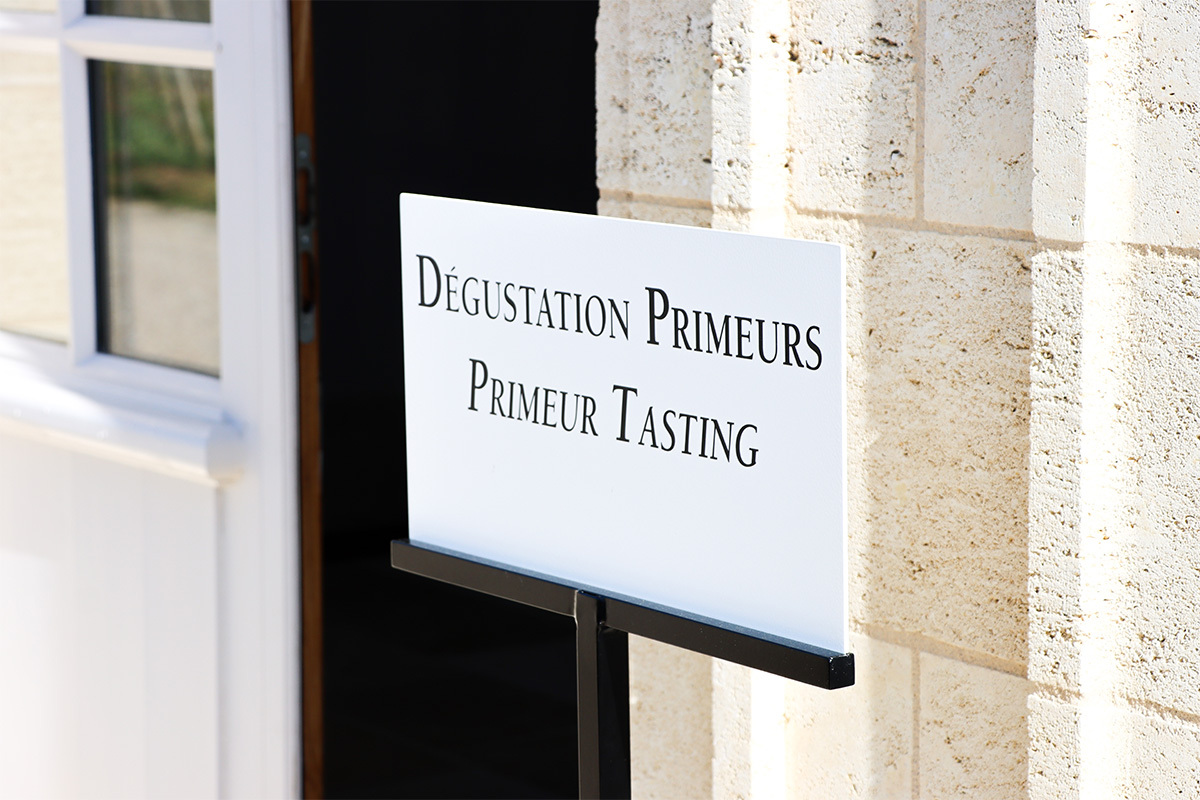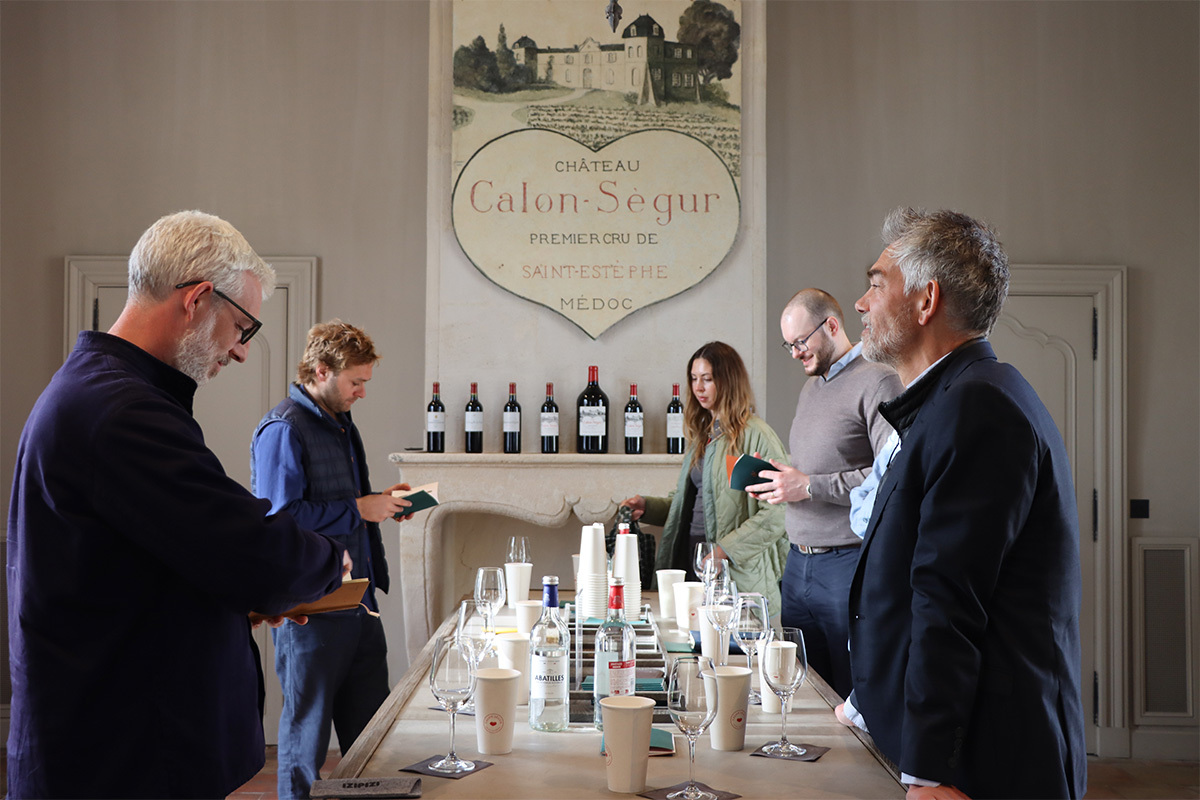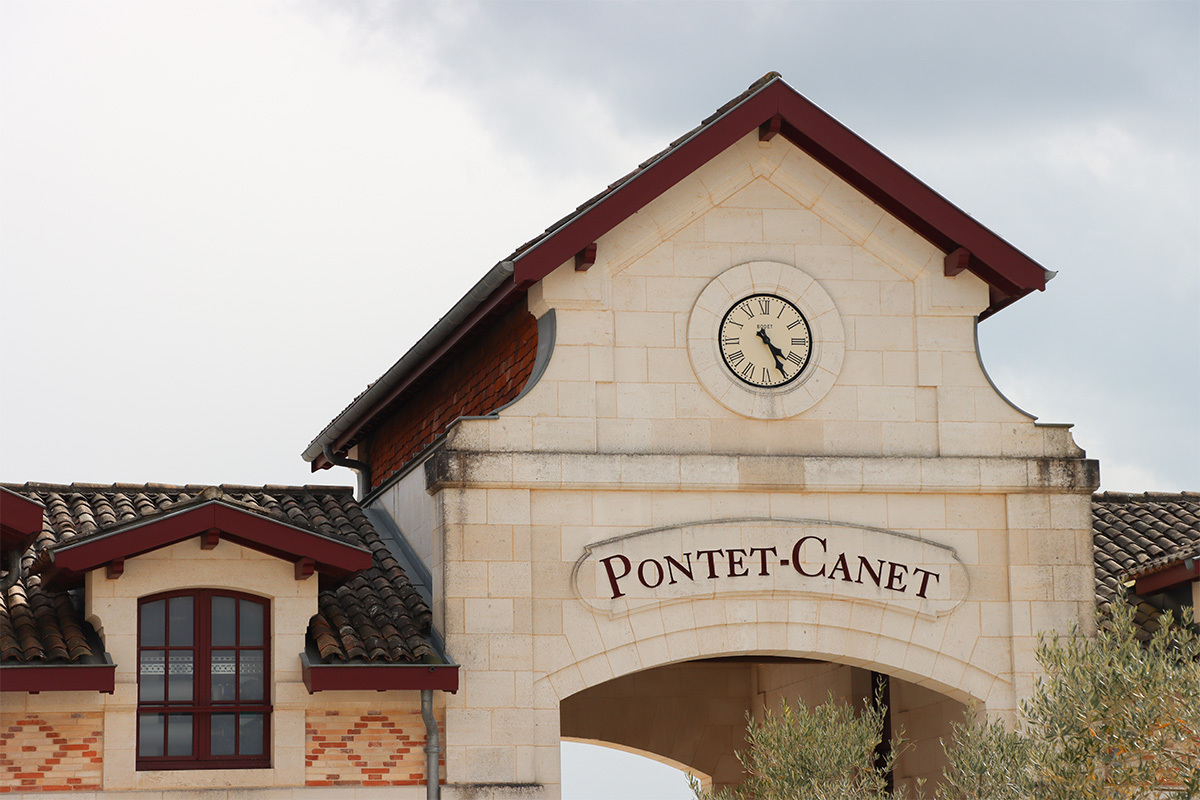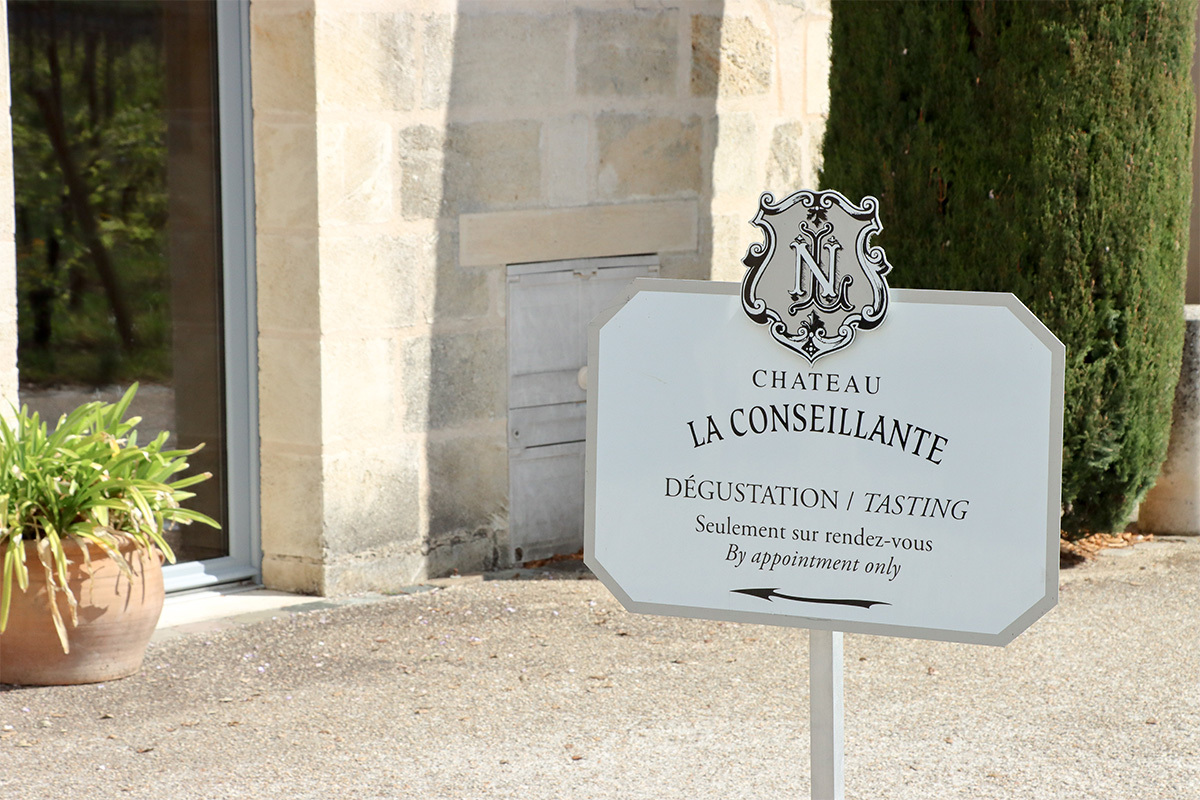En Primeur 2024: The Report
Bordeaux Index
25 April 2025
In a year marked by rain, restraint, and rigorous selection, Bordeaux has produced a vintage of aromatic finesse and classical charm - though not without its challenges.
En Primeur 2024: The Headline
The 2024 vintage was shaped by moderate temperatures and wet conditions that brought the Atlantic’s influence over Bordeaux into sharp focus, and stands in marked contrast to the drought and heat of the previous two vintages. The lighter, more fragrant wines of 2024 are something of a refreshing change after the opulent, intensely-fruited releases of 2023 and 2022, and will definitely appeal to those who have enjoyed the slimmer silhouette and lower alcohol of the 2021 vintage.
This season required huge investment from the producers throughout the year: they needed to be in the vineyard 24/7 to react to the rain and the mildew it brought; once harvest began it needed to be brought in as quickly as possible; in the winery a meticulous eye for detail and uncompromising selection was necessary to ensure a successful wine was bottled. Clearly, this favoured producers with deeper pockets, but nothing was certain and there were surprises – both positive and negative – wherever we tasted.
Overall, it is difficult to speak broadly about the quality of the vintage given the huge impact felt by individual viticultural and winemaking decisions. Speaking very generally, the Right Bank was more consistent and boasted many of the contenders for wine of the vintage; the Left Bank showed some real gems, and buyers who tread carefully should be able to find some bargains – providing the pricing is right.
The best wines are elegant, aromatic, and delicate, and should be drinking well on release. There is certainly some potential for mid-term cellaring among the higher echelons, but this is a vintage primarily for drinkers – especially those who enjoy a lighter, more traditional style of Claret.

En Primeur 2024: Challenging weather threw experience, resource, and terroir into focus
2024 began with the wettest winter since 2000, and overall rainfall was 50% above the 10-year average. While most wineries were well-equipped to deal with the mildew pressure created by such humid conditions, the timing of downpours during the critical periods created major challenges.
Rain during flowering in Spring disrupted the nascent buds and led to some grapes developing unevenly. Given the moderate temperatures, producers needed to be in the vineyards constantly to cull affected fruit, allowing the vine to divert its energies to the rest of the grapes: Montrose were selecting berry-by-berry on each bunch, and Beauséjour dropped half of their production before harvest. Rain in September around harvest risked further disease and dilution of the flavour compounds in the grapes. However, the best producers accepted the risks and held off harvesting until they had reached full ripeness. Early harvests to preserve volumes resulted in green, under-ripe wines. Harvest needed to be exceptionally quick when the moment came: Haut-Bailly required 30% more pickers than normal, and Cheval Blanc managed to bring in their entire 18 hectares in 3 days. Clearly, those with the judgement and means to make these investments and sacrifices were at an advantage.
The story was not the same everywhere, however, and precise location had a huge impact. The moderating effect of the Atlantic in the northern village of St. Estèphe, for example, limited the humidity: Calon-Ségur reported no mildew at all. Drainage was key across the region to cope with the excess water; the limestone of Saint-Emilion’s plateau and the prized T3 and T4 gravel terraces in the Médoc served the top wineries in these locations very well. That said, a great site did not guarantee good wine, and it needed to be backed up by hard choices in the vineyard, and delicate handling in the winery.
En Primeur 2024: Classic conditions for classical claret
There is no doubt that 2024 was a moderate year, with an average growing season temperature of 17.8°C. This was slightly higher than 2021, but cooler than every other vintage since 2014. This in itself is not a negative, and some great vintages saw similar temperatures: 2010 for example was cooler still at 17.6°C. This observation instead serves to highlight the extreme heat of more recent vintages. 2024 shared much more in common with the temperatures observed in the ‘80s and ‘90s; Raliza Todorieva, assistant winemaker at Lafleur, likened the season to 1985 and 1998 in particular, commenting that cooler vintages today would have been considered warm in the 1980s. In fact, the consistently moderate temperatures is a pattern that has been forgotten among the extremes of recent vintages and in 2024 the number of days above 30°C was bang-on the 30-year average. This steady, moderate temperature is truly classic, and you can see this in the restrained, finessed character of many of the wines. In the words of Alexandre Thienpont at Vieux Château Certain: “These are like the wines my grandfather used to drink. We are back to Bordeaux.”

En Primeur 2024: State-of-the-art, meticulous winemaking
While the weather may have been old-fashioned, the full might of Bordeaux’s modern winemaking capabilities was brought to bear in 2024. Above all, this was a vintage defined by selection: in the vineyard, during harvest, and then in many different phases in the winery. The grapes at Smith-Haut-Lafitte went through seven rounds of sorting after arriving at the winery. Vignerons pulled out all the stops: a laser-guided optical sorting machine was used at many wineries we visited, but the star was the densiometric sorter, which uses flotation to remove under-ripe berries: Marielle Cazaux at La Conseillante reported that it was integral to the vintage, and that she had only used it once previously in 2017. This of course meant a lot of fruit was left on the cutting-room floor. Troplong Mondot processed their smallest amount of fruit in 10 years, discarding 30% of the harvest before fermentation. Many wineries, such as Palmer and Figeac, bottled just half of their normal production – and the Moueix family are not bottling a Hosanna at all. Aside from lower production, one key takeaway is that this is not a vintage for second wines. With a few exceptions, the need to funnel all the best fruit into the Grands Vins meant that second wines were quite underwhelming.
After sorting, some producers claimed that the vinification itself was relatively simple, but it’s clear that the heavy involvement of the winemaker continued from the vineyard into the cellar. In the words of Tracey Dobbin MW at Ducru-Beaucaillou, “this was not a vintage that made itself.” It was quite common to hear about the Merlot being concentrated by bleeding off some of the juice, or 0.5% chaptalisation on the Cabernet Sauvignon. The few producers using whole bunches are increasingly showing potential of this approach in Bordeaux: Durfort-Vivens, Carmes Haut-Brion, and Pagodes de Cos were all impressive in their lifted aromatics and delicate style that suited the vintage well. This remains a curiosity in Bordeaux for now, but something that will likely grow in future.
One constant across the whole vintage was how well the tannins have been managed. In years like 2024, there is always a risk of rusticity or astringency, but the vast majority of wines showed well-rounded, finely-crafted structure that was really quite impressive. More than a few wineries, for example Calon-Ségur, managed the grape skins with state-of-the-art air pulses, instead of manual pigéage or rémontage. The progress made in Bordeaux on this front over the last decade or so has been astronomical, and it has ensured that these wines will be ready to drink young, while bright and perfumed.

En Primeur 2024: A Look at the Left Bank
The Left Bank certainly saw its fair share of peaks and troughs in 2024. There were plenty of disappointing wines, but also certainly some that will be worth seeking out – providing that the price is right. We tasted widely, but by no means everything, so do not be disheartened if your favourite Château is not highlighted!
St Estèphe
Starting in the North, St Estèphe was definitely one of the better-performing villages. The more consistent microclimate here, surrounded by the Gironde and the Atlantic, allowed for longer hangtimes, which were key in creating a fuller fruit profile. The classic firm tannins were on full display, and while some tended towards a slightly bony profile as a result, most of what we tasted showed enough weight to carry the style, with some charming dark fruit.
Highlights: Montrose, Calon-Ségur, Cos d’Estournel
Potential bargains: Capbern, Dame de Montrose, Ormes de Pez
Pauillac
The depth of the gravel in Pauillac served many producers well, and the power of terroir to deal with extreme conditions has shone through with some estates producing miraculously good bottles. But the appellation’s variety showed in the glass, and there was a wide range of quality. The best wines are truly classic mid-weight claret, with elegant fruit, mineral tension, and serious, slatey structure.
Highlights: Lafite, Pontet-Canet, Pichon Baron
Potential bargains: Grand-Puy-Lacoste, Duhart-Milon

St Julien
St. Julien appears to have suffered the most in 2024, perhaps due to its shallower gravels compared to Pauillac. Some of the wines here were quite discouraging, as the village’s natural elegance fell into lean, sometimes hollow wines. While there are some highlights, we urge buyers to proceed with caution.
Highlights: Léoville Las-Cases, Ducru-Beaucaillou
Potential bargains: Talbot
Margaux
Margaux stands alongside St. Estèphe for consistency on the Left Bank, with the finer gravels and more varied topography here likely counteracting the high rainfall. The area’s signature purity and floral profile really supported the wines in this challenging season, and the best examples showed a real generosity and charm. Some even showed a velvety character with a breadth that was difficult to find in 2024.
Highlights: Margaux, Rauzan-Ségla, Palmer, Durfort-Vivens
Potential bargains: Alter Ego de Palmer, Ferrière
Pessac-Léognan
Pessac-Léognan was unfortunately also less consistent in 2024, with the shallower gravel and higher sand content likely leading to lower levels of concentration. The best wines showed a pretty floral character and some stoney minerality, but buyers should take care in researching these wines.
Highlights: Haut-Brion, Carmes Haut-Brion
Potential bargains: Le C des Carmes
En Primeur 2024: A Look at the Right Bank
The Right Bank was more consistent in 2024, with the Merlot here - if harvested at the right time and handled well – adding flesh and concentration to the relatively light wines of this vintage. Many of the candidates for ‘Wine of the Vintage’ hailed from this side of the Gironde.
Saint-Emilion
Saint-Emilion is a huge appellation with all the varying quality that comes with the size, but the limestone here really shone through in the wines, particularly those addresses on the plateau itself. The higher amount of Cabernet Franc here also seems to have performed well, even in small portions, adding a little more structure and herbal nuance to the aromatic profile. The best wines showed a real elegance and sophistication with a salty tang and sense of energy that really set them apart.
Highlights: Cheval Blanc, Figeac, L’If, Ausone, Canon, Troplong Mondot, Beauséjour
Potential bargains: Rochebelle, Berliquet, La Gaffelière, Alcée (Castillon)

Pomerol
Pomerol also produced some very impressive wines, with the area’s powerful, intense wines pulled back into a silky, suave style. The best wines boasted plush fruit with spicy aromatics and an irony depth. If there is richness and power to be found in 2024, it is in Pomerol.
Highlights: Vieux Chateau Certain, Le Pin, Lafleur, Pensées de Lafleur, La Conseillante, Evangile, La Fleur-Pétrus
Potential bargains: Nenin, Grand Village (Bordeaux Supérieur), La Fleur-Gazin
En Primeur 2024: A Look at the Whites
Many producers were quick to praise their whites in this vintage, as the harvest was completed before the September rains. We found the picture more mixed, with a searing acidity on some that may not come into balance before it is bottled. Generally, Sémillon offered more complexity and balance, but there were well-made Sauvignon Blanc wines as well.
Highlights: Haut-Brion, Suduiraut Pur Sémillon, Champs Libres de Lafleur, Aile d’Argent, Blanc de Duhart-Milon
Potential bargains: Talbot Caillou Blanc, Petit Smith-Haut-Lafitte, Les Charmes-Godard, Grand Village

En Primeur 2024 Market Insights: Matthew O'Connell, LiveTrade CEO and Head of Investment at Bordeaux Index
In a market context, there can be no denying that this year’s En Primeur campaign comes at a challenging time for Bordeaux, being the only one of the blue-chip wine regions which has seen, across the difficult last 18 months, price declines through the levels of 5 years ago. Bordeaux in general is 4-5% down vs. April 2020, against the wine market broadly sitting up c.10% (with Burgundy and Champagne, despite the price increases reversing significantly, still sitting on meaningful gains).
This doesn’t tell the full story for Bordeaux though, for older vintages have held up better than more recent releases – generally most EP prices from the last decade have been too close to market prices of surrounding vintages, something which has reduced buying on release (through the incentive to own non-physical wine being lower) and also led to the dynamic where the EP prices look acceptable or perhaps even attractive in an upwards market, but stand out markedly as broader market prices decline. 2019 is a vintage where prices at the time were undoubtedly compelling, but are sitting broadly flat on their release levels, while some other vintages - especially more recent - have less flattering performance statistics.
All narratives have to be seen in a balanced context, of course. On the one hand, the price observations above are factual and there is plentiful availability of wines from recent vintages on our LiveTrade platform and in the broader UK and European markets; on the other hand, various macro factors are currently combining to create a wine market of low activity and price tailwinds. Owners of these wines have clearly been sitting on paper gains in the not-too-distant past and could well be doing so again when the market resumes the upwards momentum that it has demonstrated repeatedly, often with sharp increases after softer periods.
Despite the backdrop, we do see a clear potential path to a successful En Primeur campaign this year, one which drives significant collector demand and potentially reignites broader buying of Bordeaux as a region. However, it is clear that this path requires very substantial discounts to current market pricing of the cheapest recent vintages, such that the wines are in genuinely “must buy” pricing territory – marginal pricing will not achieve engagement from a majority of buyers. 2021 and 2017 will be natural comparators, but collectors will likely also look at 2018s, 2019s and 2020s as references for the premium (in some cases modest) attributed to vintages which offer superior wines.
While the vintage was a more challenging one, Bordeaux châteaux have a remarkable ability to make very good wines year-in-year-out. If the pricing is right, then collectors will be able to tuck away compelling wines at compelling prices – the sort of dynamic which characterised En Primeur further back in time. Châteaux need to be brave on this front, believing that a successful EP campaign - but at lower short term benefit to them - is important to demand dynamics for the region going forwards. We have heard encouraging noises on this front and would very much like to be highlighting genuinely attractively priced wines to collectors over the coming weeks.
